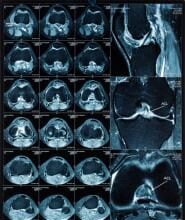In response to value-based purchasing incentives and the proliferation of risk-sharing structures, the recent article, 5 Ways Population Health is Transforming Hospital Strategy, points out that hospitals that fail to align their strategies for growth and relevancy will quickly lose market share. Specifically, Molly Gamble recommends the following tactics for tackling the issue head on:
In response to value-based purchasing incentives and the proliferation of risk-sharing structures, the recent article, 5 Ways Population Health is Transforming Hospital Strategy, points out that hospitals that fail to align their strategies for growth and relevancy will quickly lose market share. Specifically, Molly Gamble recommends the following tactics for tackling the issue head on:
- While there should always be a place for the acutely and episodic ill, the new mantra will be keeping patients healthy (and out of the hospital). Implementing disease registries and disease management programs coupled with virtual and urgent care will facilitate this goal.
- Design user friendly sites and services similar to retail and banking, giving patients the ability to access their data and schedule appointments in a safe and simple manner.
- Embrace mobile, telehealth and telemedicine in order to engage patients and improve the quality and safety of care delivered. Successful execution of this tactic requires the ability to curate and share data in a seamless manner while protecting the privacy of the very individuals that you seek to help.
- Hospitals that deliver multidisciplinary care with providers matched to their competencies will improve access and population health.
- Look beyond the four walls of the hospital to collaborate with community, public health, government agency and payer organizations to improve the health of the people in the communities you serve.
Engaging in a near one hundred and eighty degree turn will prove challenging for the most agile health system; however, collaborating with entities, some former adversaries, outside the realm of standard organizational influence might be the most daunting feat yet. One community committed to this challenge is Tulsa, Oklahoma. Together, the University of Oklahoma and the Kaiser Family Foundation have developed the OU School of Community Medicine – a first in the nation – for the distinct purpose of improving the health status of the underserved in rural and urban Oklahoma communities. Through this unique joint venture, the medical community is participating in one of seven national pilots fostering the development of patient centered medical homes for the Medicare and Medicaid populations.
Additionally, the medical school operates MyHealth, a health information exchange with more than 150 participating healthcare organizations committed to improving care coordination and health data exchange. While all may not be appropriate for size and scope of your entity, programs developed within this initiative that hold great potential for population health management include:
- Outreach psychiatric and rehabilitation team care of those with most severe mental illnesses – current savings estimated at $15k
- Palliative Care teams – LOS reduced by 2 days
- 75,000 secure web-based primary care/specialist consults – reduced face to face evaluations by 35%.
- Acute Care Evening Clinic
- Longitudinal Chronic Care Clinic – using Patient Centered Medical Home Model
- FQHCs – Physician Assistant student Patient Centered Medical Home clinics (ACA – HRSA grant), Teaching Health Center (ACA – HRSA application)
Given their rural presence, it is encouraging to see the state (ranking the highest on the primary care access challenge) promoting mid-level providers in their healthcare service delivery strategy. And with Kaiser’s commitment to mobile health, it will be interesting to learn more about this Beacon community’s utilization of such an important technology.







